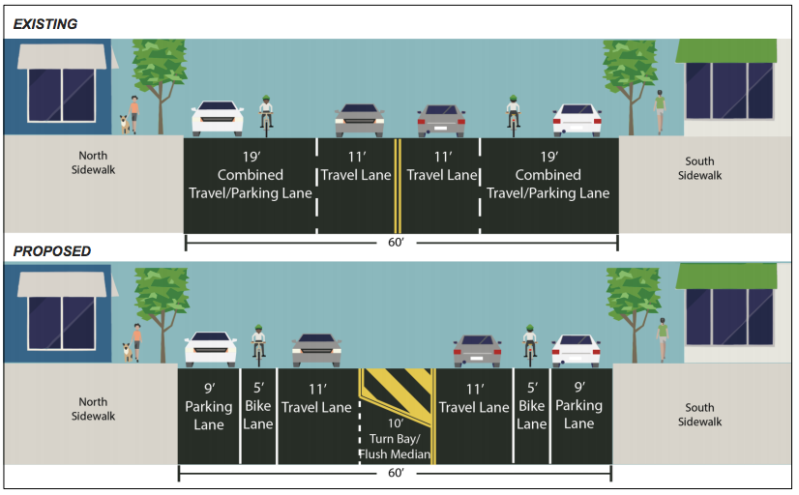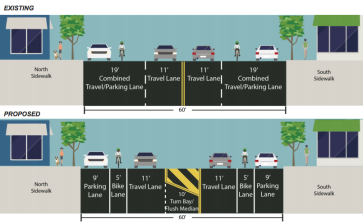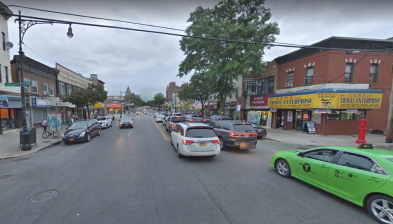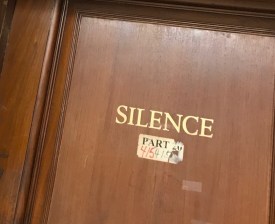DOT Will Move Ahead with Ambitious Safety Plan for Bronx Killing Zone
Months of hemming and hawing finally give way to a full redesign for a strip where hundreds of pedestrians and cyclists have been injured and one killed since 2010.


The city Department of Transportation told Streetsblog that after months of wavering it will defy a Bronx community board and push ahead with an ambitious plan to tame speedway conditions along the roadway, where 426 pedestrians and cyclists have been injured, with one fatality, since 2010.
The decision reverses an earlier move to abandon the full 31-block plan between Adams Street and Newport Avenue in favor of a shorter, 13-block redesign on the eastern segment of the avenue that would eliminate one lane of car traffic in each direction to create turning bays and a painted bike lane on each side of the roadway.
As Streetsblog prepared a story about the DOT’s surrender to some area business owners and residents who claimed the plan would cause congestion, the de Blasio administration restored the full 31-block plan.
DOT officials said they returned to the full plan only after reaching out repeatedly to local critics and realizing that the fact-free NIMBYs simply would not be appeased by the shorter, “phase one” version anyway.
“I don’t like going against the stated opinion of stakeholders, but we have a responsibility to improve safety, especially given that we have a proven method of doing it,” the DOT’s Bronx Borough Commissioner Nivardo Lopez said. Every place we’e done such designs, we’ve seen far fewer injuries. And if they attack the smaller one anyway, we might as well go with the larger [plan] because it protects the most people.”

The full 1.7-mile plan was unveiled in February [PDF] after the DOT identified Morris Park Avenue as a “Vision Zero corridor” due to its high crash rate. The roadway seems to be designed for speeding: it features two wide travel lanes in both directions and lots of double-parking, which frustrates drivers and encourages them to speed more once the roadway opens up again.
The long-overdue safety and traffic-calming improvement “reduces speeding … creates safer left turns, encourages slower speeds 24 hours a day … make[s] pedestrians more visible to drivers [and] minimize[s] double parking on a retail corridor.”
That promise — and the agency’s proven record of improving safety after major redesigns — did not satisfy area elected officials and the community board, which rejected the safety plan in May. Shortly after that, Council Member Mark Gjonaj famously grabbed a megaphone and screamed, “Shame! Shame!” to protest the street-safety plan. (Gjonaj did not return calls from Streetsblog.)

Opponents like Gjonaj frequently untethered themselves from reality and their own eyes. Indeed, a speeding car is featured prominently in a News12 segment made over the summer that was actually trying to be sympathetic to the opposition to safer streets. In the report, Community Board 11 Executive Board Chairman Al D’Angelo, who spearheaded the board’s rejection, gestured toward the speeding car — then concluded, without explanation, that the city plan to remove one lane of car travel would somehow make things worse.
“D’Angelo says speeding cars cause the injuries the DOT worries about,” the reporter said, preferring not to consider that statement in the context of the DOT plan to reduce speeding with its time-tested traffic-calming efforts.

Indeed, D’Angelo and his CB11 colleagues are willfully ignoring the essential fact that city traffic calming projects have consistently improved safety. On commercial Vanderbilt Avenue between Grand Army Plaza and Atlantic Avenue in Brooklyn, DOT says injuries fell by 15 percent. On Macombs Road between University and Jerome avenues in The Bronx, injuries dropped by 41 percent. On Jewel Avenue between 164th and Main streets in Queens, a four-lanes-to-two-lanes conversion reduced injuries by 37 percent, city statistics show.
“In 2009, we did a similar conversion on Allerton Avenue from East Gun Hill Road to Boston Road and pedestrian injuries are down 50 percent there,” Lopez said.
The challenge for transportation planners, Lopez added, is that so-called road diets are counterintuitive if your opinion of how roads should work is formed from behind the wheel of a car.
Lopez reiterated that DOT statistics show that traffic-calming plans do not significantly increase travel times. Drivers think they are going slower, but street design often decreases double parking — a real problem on Morris Park Avenue — and, as a result, maintains traffic flow, despite one fewer lane.
But above all, Lopez said the changes on Morris Park Avenue, which will be built in the spring, are a life-and-death issue.
“I am reminding folks that we have a responsibility to reduce the amount of injuries and fatalities on New York City streets,” he said. “For too long, the thinking was, ‘Accidents happen.’ Well, no. That’s wrong. There are things we can do to reduce crashes — and it is negligent not to do them.”
It’s not the first time Mayor de Blasio has implemented a life-saving project despite community opposition. Earlier this year, he bucked a Queens community board and built paired protected bike lanes in Sunnyside. And the mayor says he still supports the completion of a four-phase reconstruction of Queens Boulevard, though the final segment has been delayed. The first three parts of the project have reduced fatalities on the former “Boulevard of Death” to zero.


